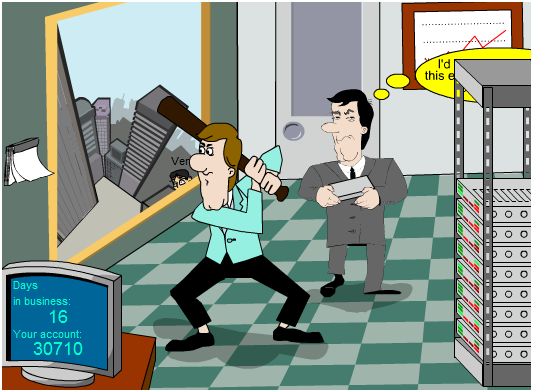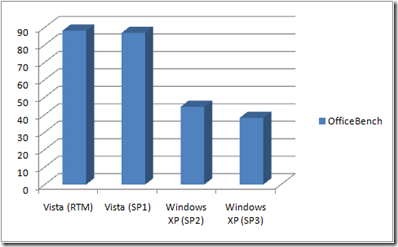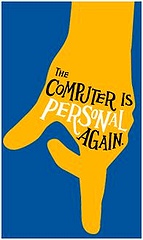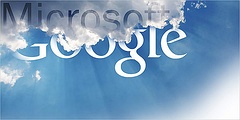 TechMeme is great in threading together relevant posts, but is largely based (so I think…) on direct linking, so of course it could not auto-detect the ironic relationship between:
TechMeme is great in threading together relevant posts, but is largely based (so I think…) on direct linking, so of course it could not auto-detect the ironic relationship between:
- Amazon’s S3 service outage this morning (news of which I’m sure will attract dozens of blogs in the next hour), and
- Phil Wainewright thought-provoking writeup: SaaS vendors, eat your own dogfood, or die
Phil quotes Greg Olsen, CTO of Coghead, a web-based development platform which moved its servers to the Amazon infrastructure recently:
“As ironic as it may be, we continue to see software applications deployed as a service but which fail to use any service-based infrastructure themselves”
“The move to SaaS applications built on SaaS is a much more profound shift than the move from on-premise applications to SaaS applications …”
“Ironically, some of the first victims of this new economy may be some pioneers of the software-as-a-service movement. Today, many established SaaS application providers are applying much more of their precious focus and capital to infrastructure issues than newer competitors that are aggressively utilizing service-based infrastructure … the build-it-all-ourselves SaaS application vendor … will ultimately end up as [an] anachronism.”
Today’s Amazon outage appears to rebuff Phil and Greg’s point. Reality check: this is the first time Amazon S3 went down, and it’s already back up. Salesforce.com had its fair share of outages, so did other SaaS providers, and so did just about any in-house systems companies run their own installed software on. I’m a big believer in focus, specialization and I trust the few mega-cloud companies that will emerge can maintain a more robust infrastructure than we could all do individually. (So yes, if it’s not obvious, I do buy into Nick Carr’s Big Switch concept.)
Another approach is to look at where value can be added: the consensus view from a quick Enterprise Irregulars chat is that infrastructure will be commoditized faster (or it already is) than software, where there is a lot more room for innovation by new and – thanks to outsourced infrastructure – smaller players.
And if acronyms were not ugly enough already, here’s to entering the age of SaaS-on-SaaS. 
Update: What better confirmation of my point than today’s rumors about EMC hosting SAP’s system – I assume it’s Business ByDesign, the new On-Demand offering for the SMB market. (Side-note: I’ll be traveling and be time and Internet-challenged for the next three weeks, but SAP’s BDD is one of the subjects I will come back, as it seems to be largely misunderstood. Oh, and I just love the fact how Mozy, my favorite online backup service is often referred to in the EMC story).
Related posts (on the Amazon outage): Rough Type, mathewingram.com/work, LinkFog, Data Center Knowledge, Web Worker Daily, TechCrunch, Moonwatcher, Project Failures, SmoothSpan Blog, Enterprise Anti-Matter.



 I had mixed thoughts at first reading: Obviously environmental consciousness is becoming fashionable. Companies rush to launch their green initiatives in order to look “responsible corporate citizens”. OK, that’s the cynical view, but after all, these are often useful initiatives, and I’ve already said you
I had mixed thoughts at first reading: Obviously environmental consciousness is becoming fashionable. Companies rush to launch their green initiatives in order to look “responsible corporate citizens”. OK, that’s the cynical view, but after all, these are often useful initiatives, and I’ve already said you 

 :
: . Intuit is clearly throwing in support resources, customers can register and will be called back to individually assess their situation. For many, the damage may very well be more than losing a few hours:
. Intuit is clearly throwing in support resources, customers can register and will be called back to individually assess their situation. For many, the damage may very well be more than losing a few hours: Who has time for this? Between the applications we actually use and all the crapware needed just to keep our computers running (virus scan, firewall, anti-spy, desktop search, backup, synchronization …etc), it’s just getting way too much to deal with.
Who has time for this? Between the applications we actually use and all the crapware needed just to keep our computers running (virus scan, firewall, anti-spy, desktop search, backup, synchronization …etc), it’s just getting way too much to deal with.

 Considering how many things
Considering how many things 


Recent Comments